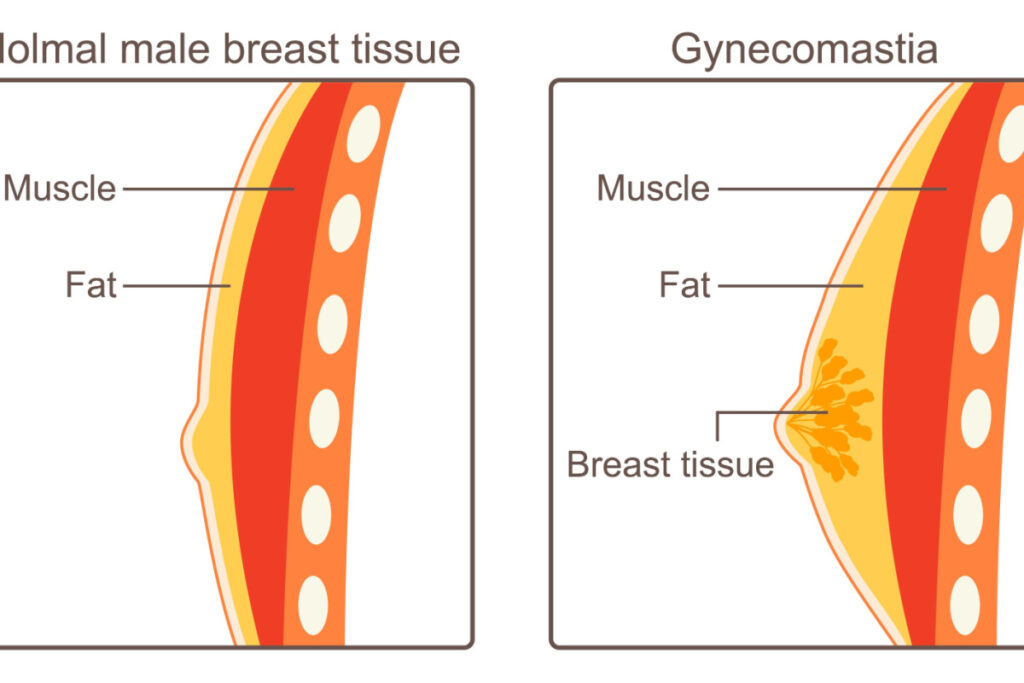
Gynecomastia develops differently among patients, and there are a variety of factors that may differentiate each case. This may include the extent of the breast enlargement and the makeup of the breast tissue. In fact, there are several grades by which gynecomastia is categorized. The condition can also be classified based on symmetry; it may develop in both breasts or just one. Dr. Breitbart is dedicated to providing gynecomastia patients the solutions they need to feel confident in their bodies. Below, learn more about bilateral and unilateral gynecomastia.
Gynecomastia Classifications
Grade I: This grade describes subtle enlargement of the breasts with localized tissue surrounding the areola. This is also described as puffy nipples.
Grade II: When enlargement is found beyond the region of the areola, it is classified as grade II gynecomastia.
Grade III: Similar to grade II, this grade of gynecomastia exceeds areola boundaries, but skin redundancy is also observable.
Grade IV: Grade IV is when the breasts are significantly enlarged and may even appear feminine. Skin quality is also worse.
Unilateral vs. Bilateral Gynecomastia
Unilateral gynecomastia is when only one breast is affected by the condition, unlike bilateral gynecomastia, which is when both sides of the chest become enlarged. While both forms of gynecomastia can bring about feelings of shame, distress, and confusion, having only one enlarged breast makes the condition highly visible, which may lead to additional psychological harm to patients. Certain medications that contribute to the development of gynecomastia may even affect the symmetry of the condition.
What Causes Unilateral Gynecomastia
As troubling as the physical appearance of unilateral gynecomastia can be for many patients, there is also the concern that having only one enlarged breast can mean there is a serious underlying medical condition responsible, such as cancer or a tumor. Unilateral gynecomastia can have the same underlying causes as the bilateral form of the condition and may be due to natural fluctuations in development. However, the condition can be a sign of certain illnesses, and therefore it is essential that you visit a provider, who may recommend testing to rule out certain medical conditions as the cause of your gynecomastia. When the condition is not related to underlying medical issues, it generally does not pose a risk to your physical health. However, many patients suffer mentally due to the appearance of their chest, which is why Dr. Breitbart provides safe and effective gynecomastia surgery.
Gynecomastia Treatment in Long Island and NYC
The first step in finding out more about your gynecomastia and available treatment options is to consult with a skilled surgeon such as Dr. Breitbart. Schedule your appointment by calling our office or using our convenient online form.



